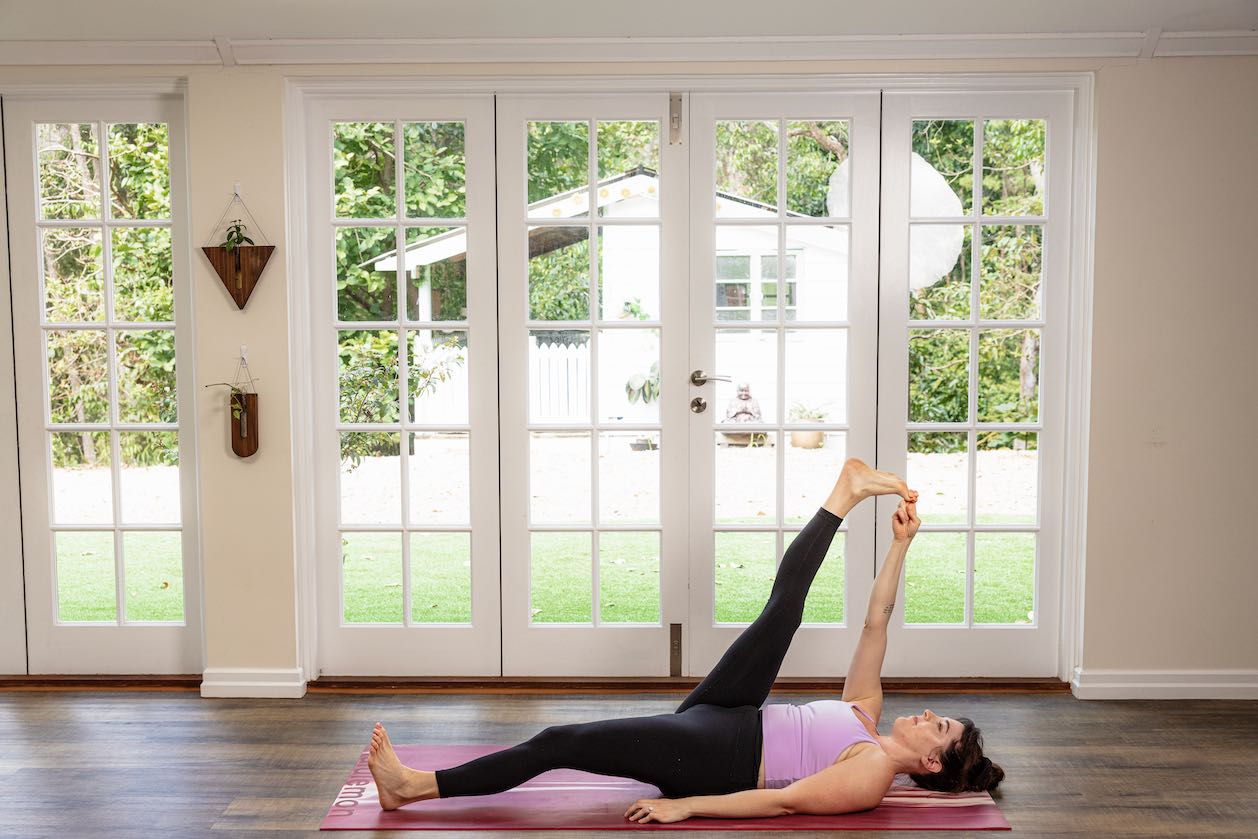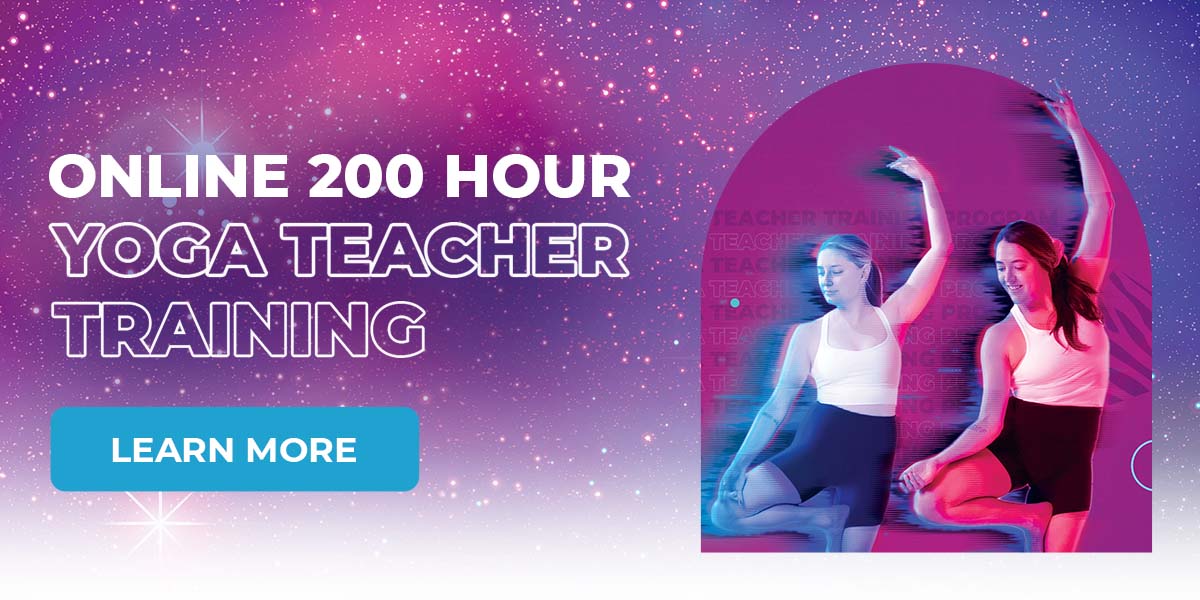Supta Padangusthasana or Supine Big Toe Pose or Reclining Hand-to-Big-Toe Pose! If you’re looking for a pose that will improve your flexibility, and leave you feeling rejuvenated, you’ve come to the right place. Supta Padangusthasana, also known as Reclining Hand-to-Big-Toe Pose, is a powerful asana that targets the hamstrings, hips and groin muscles. In this comprehensive guide, we’ll take you through the steps to master this beautiful pose while exploring its incredible benefits.
How to Do Supta Padangusthasana Pose
Grab your Yoga mat and let’s dive into the step-by-step process of performing Supta Padangusthasana:
- Begin by lying flat on your back, legs extended along the mat, ensure your spine is in a neutral position. Relax your body and take a few deep breaths, allowing any tension to melt away.
- Bend your right knee and hug it into your chest, interlacing your fingers just behind your thigh. Take a moment to feel the gentle stretch in your hip.
- Extend your right leg toward the sky, straightening it as much as possible while keeping the left leg long and grounded. Flex your right foot and keep a micro bend in the right knee (so you don’t lock out the joint).
- If you’re comfortable, use your hands to hold the back of your right leg, along the calf or ankle. Or, see if you can reach for your toes, interlace the peace fingers of your right hand around your big toe (peace fingers go through the space between your big toe and second toe and wrap around the back of the big toe). Try to connect thumb to pointer finger to complete the bind.
- If reaching your toes feels challenging, you can loop a strap or towel around the arch of your foot and hold onto the ends of the prop.
- Find stability by pressing your left leg into the ground, engaging your quadriceps. Ensure your tailbone is grounded and your lower back remains neutral.
- Relax your shoulders and maintain a soft gaze towards your extended leg. Allow your breath to flow naturally, inhaling and exhaling deeply.
- Hold the pose for 5-10 breaths, gradually increasing the duration as you become more comfortable. With each exhale, invite relaxation into your body.
- Slowly release your right leg back to the mat, hugging both knees into your chest to neutralise your spine. Take a moment to notice any sensations in your body before repeating the sequence on the opposite side.

The Benefits of Supta Padangusthasana Pose
Now that you know how to perform Supta Padangusthasana, let’s explore the amazing benefits this pose can bring to your practice. Also if you’re loving these Yoga pose breakdowns, our Yoga Teacher Training Course might be for you! It’s an online course, with recorded videos and some live content. Within the course, we workshop 108 postures! It’s the perfect way to dive deep into both the physical and spiritual side of Yoga.
Improved flexibility
Supta Padangusthasana stretches and lengthens the hamstrings, hips, and groin muscles, promoting increased flexibility and range of motion in these areas.
Relief from back pain
By stretching the hamstrings and releasing tension in the lower back, Supta Padangusthasana can help alleviate mild back pain and discomfort.
Stress reduction
Engaging in this soothing pose encourages deep breathing and mindfulness, allowing you to unwind, release stress, and find inner calm.
Hip and groin opening
Supta Padangusthasana gently opens and stretches the hip and groin area, improving flexibility and reducing tightness in these regions.
Posture improvement
Regular practice of this pose can enhance your posture by lengthening the spine, strengthening the core muscles, and promoting proper alignment.
Mind-body connection
Supta Padangusthasana encourages you to focus on your breath, allowing you to cultivate a deeper mind-body connection and develop mindfulness during your practice.
Digestive stimulation
The gentle compression of the abdominal area in this pose stimulates digestion and can help alleviate digestive discomfort.
Relaxation and rejuvenation
As you surrender into the pose, Supta Padangusthasana promotes relaxation, reduces anxiety, and leaves you feeling rejuvenated and refreshed.
Precautions and Tips for Supta Padangusthasana
While Supta Padangusthasana offers numerous benefits, it’s essential to practice with awareness and care. Keep the following precautions and tips in mind.
Warm-up
Prior to attempting Supta Padangusthasana, warm up your body with gentle stretches to prepare your hamstrings and hips.
Modify with props
If you’re unable to reach your toes comfortably, use a strap or towel looped around your foot to aid in stretching. Gradually work toward holding your foot without assistance.
Avoid strain
Do not force your leg to straighten fully if it causes strain or discomfort. Instead, focus on gradually increasing the stretch over time.
Listen to your body
Pay attention to any sensations or discomfort during the pose. If you experience sharp pain or excessive strain, gently release the pose and consult with a qualified Yoga instructor or healthcare professional.
Breathe deeply
Throughout the pose, maintain a steady and smooth breath. Deep inhalations and exhalations will help you find relaxation and stability in the pose.
Be patient
Supta Padangusthasana may take time to master, so be patient with yourself. With regular practice, your flexibility will improve over time.
By incorporating Yoga into your life you can enhance your flexibility, balance and overall well-being. Always listen to your body, respect your limitations and seek guidance from a qualified teacher. If you don’t know where to start, try out our online classes! You can begin your 7 day trial of MerryBody over here.
Always merrymaking,
Emma + Carla

